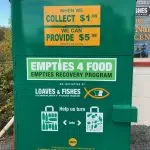
‘It’s really a mystery:’ Nanaimo-tagged Canada goose spotted in Chicago
NANAIMO — Why did the chicken cross the road?
No-one knows, but the bigger question for VIU biologists with a focus on banding, tagging and tracking local Canada geese is why did the goose cross the continent?
Eric Demers, chair of the university’s biology department, told NanaimoNewsNOW the sighting of a bird they tagged in 2016 in Departure Bay, showing up last October in Chicago, some 3,000 kilometres away, is extremely unusual.
“How did it get there? Is it part of a migration it’s doing? We really don’t know, this is the one sighting we’ve had. Did it have difficulty in its orientation or did it get picked up by another flock? It’s really a mystery.”


